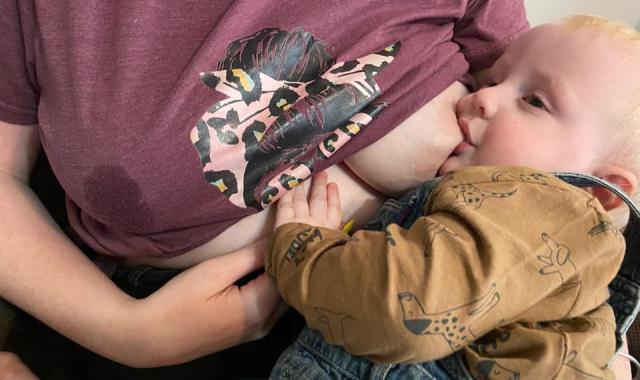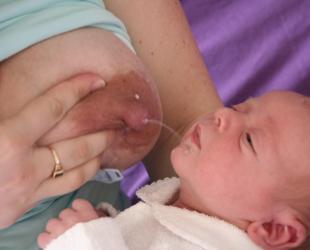Leaking breasts are common but can be embarrassing.

In the early days many mums experience leaking breasts - during feeds from the other breast and in between feeds. There are lots of ways to cope with it.
Leaking is one sign that your breasts are making and releasing milk. Some breasts leak more than others but it’s okay if your breasts don’t leak. They’re still making milk.
Leaking usually eases and stops as your baby gets older but some mums may experience it for longer than others.
How to manage leaking
During the day
- Wear breast pads in your bra. Some are washable, some are single-use.
- Shaped breast pads are less likely to press and flatten your nipples than flat ones.
- Change your breast pads when they are wet to stop your nipples becoming sore or damaged.
- A silicone breast pad that presses against your breast can stop leakage.
- You can also apply gentle pressure yourself to stop your breast leaking. Be careful not to do this too often as pressure on the breast can cause it to become inflamed.
During feeds
- When your baby is feeding, your let-down reflex may cause milk to drip from the other breast. You can soak up extra milk with a soft cotton cloth or towel.
- Some mums collect the leaking milk to use later. You could use a silicone or a clean container. See below for warnings about using milk catchers.
At night
- Wearing a sleep bra or singlet-top to bed can provide gentle support and hold breast pads.
- A mattress protector, waterproof underlay or folded towel may also help keep you and your bed dry.
When you're out with your baby
- Have some spare breast pads on hand or tuck the corner of a clean towel into your bra over the leaking nipple to soak up your milk.
- Sometimes you may want to stop leaking milk completely. You can press firmly on your nipple with your fingers, hand or forearm for several seconds as you feel the let-down. It’s not a good idea to do this all the time in case it leads to problems.
- Some mums wear patterned, loose clothing when they’re out because it’s less likely to show wetness from leaking milk.
Be careful if using a milk catcher
Some mums use a silicone milk catcher to collect leaking milk, either while they are feeding or between feeds. While these may be effective, the continual suction can remove more milk than necessary. This may cause your breasts to make more milk than your baby needs, creating an oversupply.
Some mums also find the suction can hurt their nipple or breastif they use the catcher too often or for too long.
© Australian Breastfeeding Association June 2025


